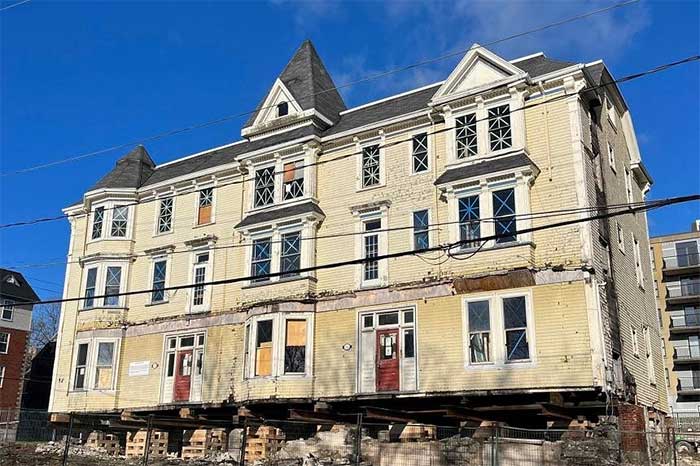According to the Straits Times, the relocation of the Elmwood building in Halifax, Nova Scotia, Canada, was carried out by the construction company S. Rushton in early December.
“After several weeks of preparation, the 9-meter move of the building went smoothly. About 700 bars of soap were used,” the company S. Rushton shared on Facebook along with a time-lapse video of the building relocation process.
The Elmwood Building was constructed in 1826 as a residence. After 70 years, it was converted into a hotel and later transformed into an apartment building.
Elmwood was initially slated for demolition in 2018. However, the real estate company Galaxy Properties purchased the building that same year. According to Galaxy Properties, they aimed to relocate the building approximately 300 meters closer to the road and adjacent to a nine-story apartment project.
Mr. Sheldon Rushton, the owner of S. Rushton, recognized the challenges involved in moving the nearly 200-year-old building and decided to use Ivory soap bars. His wife, Mrs. Leanne Rushton, had to visit 15 supermarkets to gather enough soap bars.

The weight of the building crushed the soap and made the beams smoother.
Instead of using traditional rollers, S. Rushton placed the soap bars on more than a dozen steel beams beneath the building. The building’s weight crushed the soap, making the beams smoother. With the help of two excavators and a tow truck, the building was successfully relocated to its new position.
This is not the first time soap has been used to move structures. The Utah Department of Transportation in the United States previously used soap to relocate bridges. Most recently, in April of this year, 60 liters of Dawn liquid soap were used to move a 2,400-ton bridge.
In 2016, construction workers in Missouri, USA also used dish soap to position a bridge accurately.


















































